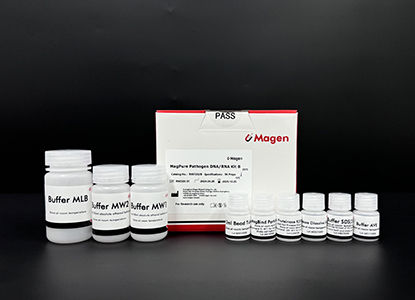Ⅰ. Technology & Application
mNGS
· Definition:
mNGS refers to a high-throughput sequencing method that directly sequences all nucleic acid sequences in a sample without the need for pre-set sequencing. Complete microbial testing for bacteria, viruses, fungi, and parasites in one go.
· Application for infection:
It can detect rare, newly emerging, and mixed pathogenic infections, solving the problem of relatively complex and time-consuming clinical pathogen diagnosis in immunocompromised patients (easy infection, co infection, weak antibody response based on immune detection methods).
In addition, mNGS has great potential in strain typing, virulence and resistance gene detection, hospital infection monitoring, community infectious disease outbreak monitoring, and can provide efficient and accurate pathogenic evidence for clinical diagnosis and treatment.
tNGS
· Definition:
tNGS refers to the method of enriching and amplifying target nucleic acid sequences in samples prior to library construction before performing high-throughput sequencing.
· Application for infection:
tNGS can obtain more information in a single test, which is beneficial for the detection of co infections and complex infections. At the same time, tNGS can detect pathogens with extremely low numbers or low positivity rates using conventional detection methods.
tNGS has clinical application potential in pathogen detection and drug resistance diagnosis, and has been used in the detection and drug resistance evaluation of tuberculosis, influenza A virus, and cytomegalovirus pathogens.
Ⅱ. mNGS VS tNGS
① Technical features:
mNGS:
Sequencing all nucleic acid sequences in the test sample.
tNGS:
Targeted sequencing of specific genes in the test sample.
② Advantages:
mNGS:
Accurately detecting all genetic information in the sample enhances the ability to detect rare and unknown pathogens.
tNGS:
Not affected by the human genome and with low testing costs.
③ Limitations:
mNGS:
Interference from host and background bacterial sequences, inability to distinguish between infected and colonized microorganisms, etc.
tNGS:
Relying on the design of hundreds to thousands of nucleotide probes, the enrichment process is prone to introduce contamination, and the detection range is limited, making it unable to detect new pathogens.
④ Workflow:
mNGS:
The technical requirements of mNGS are relatively low, but it requires complex bioinformatics analysis.
tNGS:
The workflow of tNGS requires more time and reagents to prepare the library, but simplifies bioinformatics analysis.
⑤ Time & Cost:
mNGS:
Long (24-36 hours) time consuming and the cost is high.
tNGS:
Short (8-16 hours) time consuming and the cost is lower.
⑥ Clinical application:
mNGS:
It has clinical value in rare, newly emerging pathogen detection, and multiple pathogen infection clinical application scenarios.
tNGS:
It improves the detection ability of intracellular pathogens and fungi, especially for RNA viruses (such as COVID-19).
⑦ Improvement direction:
mNGS:
Need to improve the quality of code reading and reduce missing detection of bacteria with high GC content during library construction.
tNGS:
Further optimization of primer system and primer ratio is needed to reduce the interference of primer dimers.
Ⅲ. Summary and Discussion
For patients with difficult and complex infections or newly emerging pathogen infections, mNGS is recommended for pathogen detection. For patients with a clear pathogen tendency, tNGS can be used for auxiliary diagnosis.
Multiple methods can also be used simultaneously or sequentially, such as using mNGS to obtain initial sequences for new pathogens, and PCR or tNGS can be used for reevaluation.
Magen Pathogen DNA/RNA kit for NGS:

| CAT NO | PRODUCT NAME | SIZE | PRICE | Application |
| R667202B | MagPure Pathogen DNA/RNA Kit | 96 preps | $439.00 | |
| R6672C | MagPure Pathogen DNA/RNA Enrich Kit | 96 preps | $760.00 |


